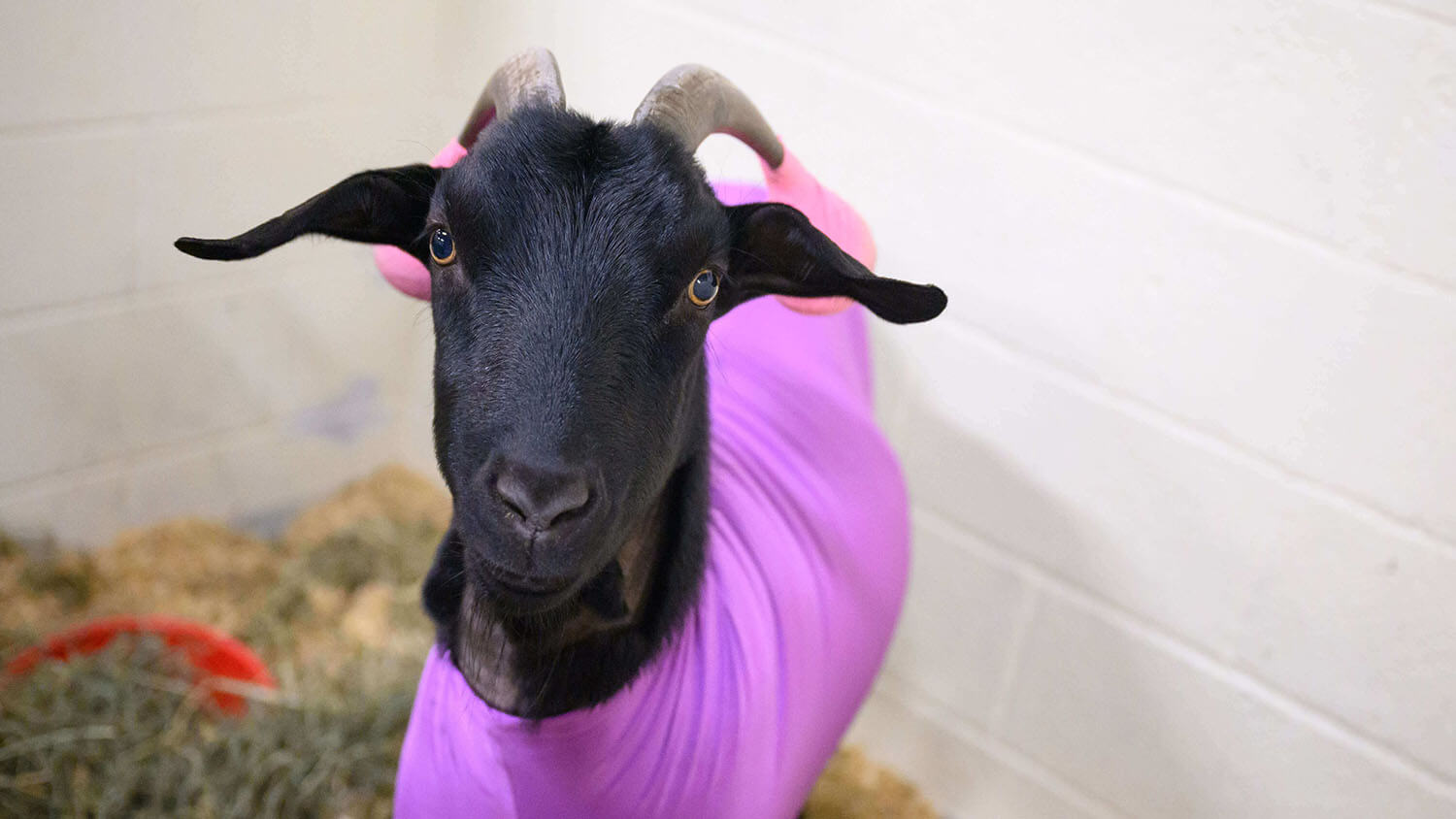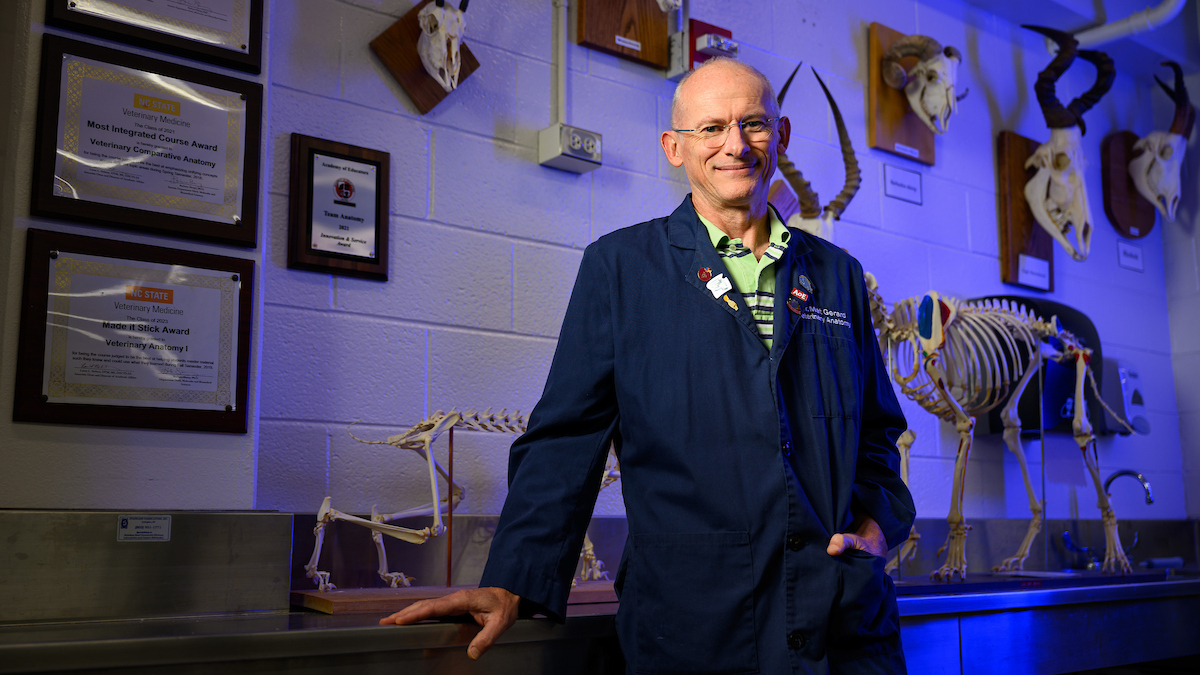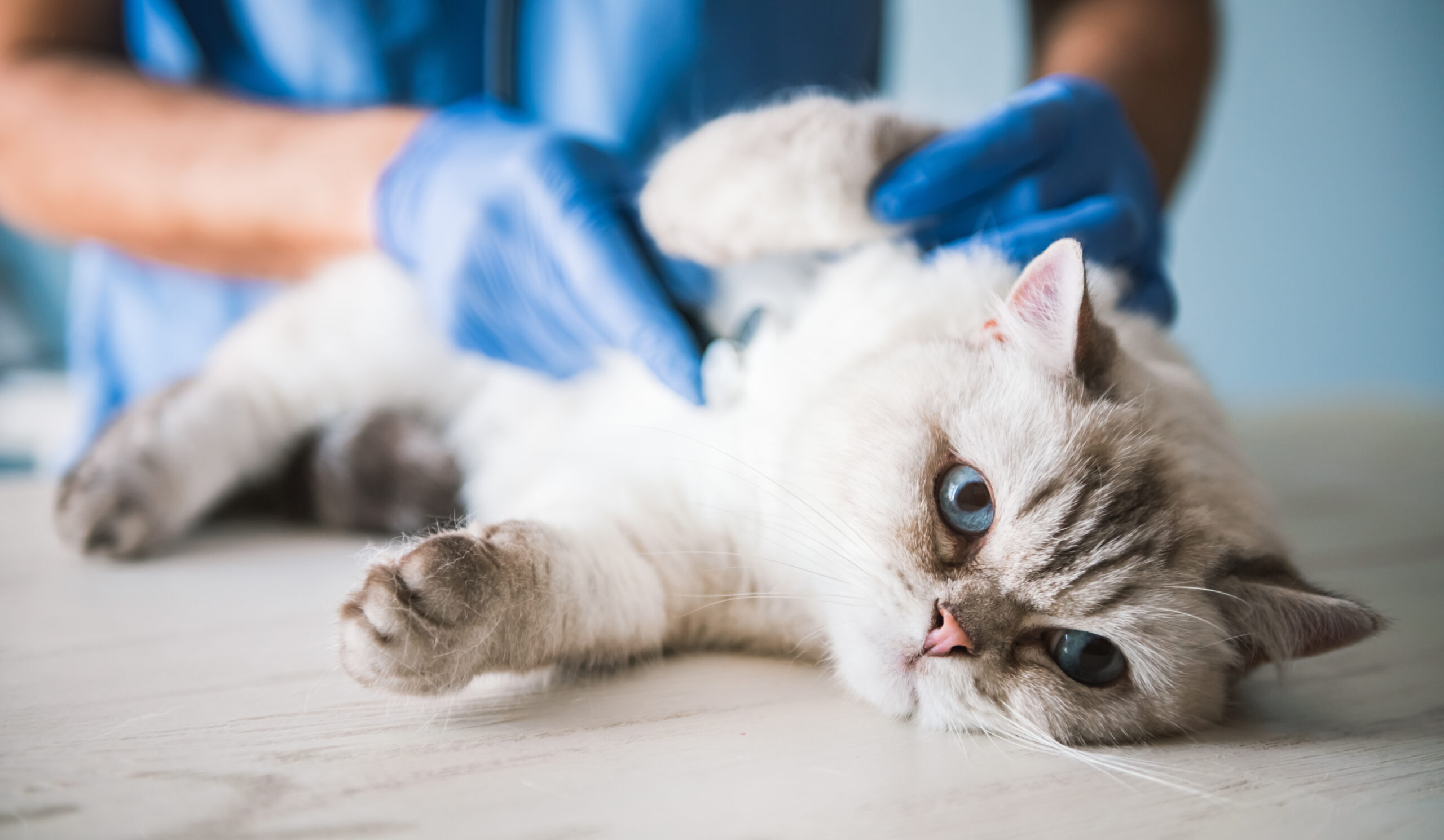Patient Spotlight: Rare Treatment Leaves Goat Udderly Unfazed

No one told Amelia she was a goat. After three years together, Micki Ollman is definitely not going to tell her now.
As the resident house goat at Sherrod Grove Stables in Oak City, N.C., Amelia thinks she runs the place. She sleeps in the kitchen, runs in the pasture with the horses and follows Ollman around as she cares for the more than 60 animals on the farm.
“I’ve got three other goats,” Ollman said. “None of them behave like her. She’s the queen.”
Amelia joined Ollman at the farm when she was 2 hours old. A farmer gave Ollman the goat when Amelia’s twin died not long after birth. Amelia weighed 3 pounds when she should have been 7 to 10 pounds.
Ollman was grateful the farmer didn’t just leave Amelia in the field with her twin.
“I take in all sorts of animals who wouldn’t survive in the real world,” Ollman said. “They’ve all got some sort of problem or were neglected or abused.”
Since she had never raised a goat before, Ollman kept Amelia with her at all times. She bottle-fed the tiny goat and took her everywhere, including to her workplace, an equine veterinary office, and on vacation to the beach. The 24/7 attention meant the two formed a very close bond.
“She’s like one of my kids,” Ollman said. “She’s my sounding board and knows more about me than anyone.” When Amelia’s udder began filling up with a milk-like liquid, Ollman knew something was wrong. Amelia had never been around a male goat or pregnant. There was no reason for her to start producing milk. Amelia was treated at both her regular veterinarian and the NC State farm animal service with medication for her inappropriate lactation.
Since both sides of her udder kept lactating for more than six months, even after trying to manage her condition with medication, the farm animal service team decided it was time to try a different approach. Amelia came back to NC State for a bilateral mastectomy and ovariectomy, meaning both of her ovaries and her udder were removed.
“If medical treatment fails to stop the milk production, the udder can become large and painful, get infected or get damaged from hitting the ground,” said Derek Foster, associate professor of ruminant medicine. “In these cases, we will do a mastectomy. The condition is not uncommon, but one bad enough to need a mastectomy is more rare.”
A goat mastectomy surgery involves more than just the ruminant team at NC State, and can take a couple of hours.
“The team approach is crucial to our success and something that we do well here at NC State,” Foster said. “The anesthesia team manages her care during surgery and makes sure that the goat is not in too much pain after she wakes up. An equine surgeon performs the surgical procedure and others run a culture of the mammary secretions to determine if there is an infection to be treated. Having a team working on the case is really helpful.”
Even after her surgery, Amelia was determined to do things her way. She was up and standing after anesthesia within 30 minutes. Her Jane Fonda workout-inspired post-surgery garb just added to the feistiness. She was decked out in an electric purple spandex goat shirt to keep her from chewing on her incisions. Bright pink veterinary tape was wrapped around the tennis balls on the end of her horns to keep her from accidentally hurting herself. She was ready to go home.
She’d let anyone who walked by know she ready to be discharged by bleating at full volume. The team tried to tell her she still had one more day in the hospital for her recovery before heading home, but she didn’t care.”All the vets at NC State are phenomenal. I was up there all day for Amelia’s surgery and it was very enlightening to me. They think outside the box there and the compassion that everyone showed for every animal that came in that day shocked me. It was a great experience, truly phenomenal.” ~ Miki OllmanAmelia wasn’t the only one ready to go home. Ollman wanted to have her back at the farm, where she’ll be restricted to Ollman’s kitchen for two weeks to heal. To Ollman, it was weird not having a feisty presence around, getting into everything. It threw off her whole routine.
“She understands English,” Ollman said. “And I’m pretty sure she’s going to cuss me out about it. But I’m excited to have my goat home.”
For Ollman, it’s all worth it. While she hopes she doesn’t have to see NC State again for a long time, she was in awe of the experience she had when she was here.
“All the vets at NC State are phenomenal,” Ollman said. “I was up there all day for Amelia’s surgery and it was very enlightening to me. They think outside the box there and the compassion that everyone showed for every animal that came in that day shocked me. It was a great experience, truly phenomenal.”
The veterinary hospital even kept Ollman’s secret about Amelia actually being a goat. Amelia still doesn’t know, and nobody plans on telling her anytime soon.
To learn more about farm animal services, visit their web page.
~Brittany Sweeney/NC State Veterinary Medicine
- Categories:


